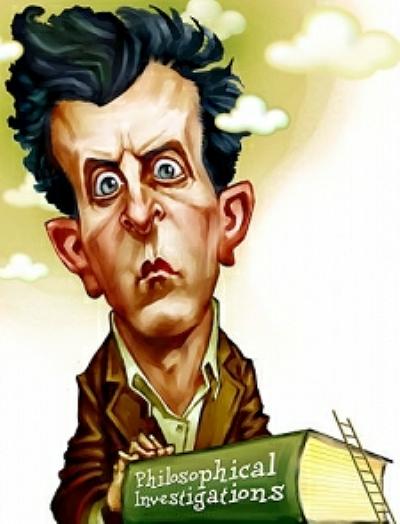Four Naturalistic Strategies in Accounting for Ethical Claims
The intuitionist account of value claims, which G. E. Moore presented in answer to the is/ought dichotomy first flagged by David Hume, proposes that there are objective facts about what’s good, especially the good thing to do, and that they hinge on a private experience we each have of the good. Just as we know colors by seeing them, so, this thesis goes, we know good actions and objectives by recognizing them (if and when they manifest themselves to us through sensory input). That is, according to Moore, the term “good” can be understood as denoting a property of a thing, just as a term like “yellow” denotes a property which some things may have, namely the property of being the color we call “yellow.” But where yellowness is, as Moore put it, a “natural property” which we know through our direct experience of it (when we see it) goodness counts as a “non-natural property” because it’s not inherent in any of the sensory inputs we have, although there is something about the way we have those sensory inputs that prompts in us the recognition of the presence of goodness alongside the "natural" properties we observe through our sensory inputs.
That is, on this view, goodness is knowable directly through our experience just as the sight of yellow in a thing is. This makes use of the Kantian sense of “intuit,” i.e., of having knowledge of something without the intermediation of other knowledge, of something else. In other words, we don’t need a reason to reach the conclusion that something is good, if it is, because we recognize it directly (just as we recognize that yellow things are yellow).
But Moore offered no explanation of what it is to know what’s good in the way we know what’s yellow and later thinkers, like Philippa Foot, questioned the usage of “intuition” as Moore presented it. Foot, in her introduction to Theories of Ethics, a compilation of articles she edited, wrote that, in other cases where we're moved to claim intuition, as when we’re trying to guess another’s intentions or state of mind but find ourselves guessing and so speak of having an intuition of what the other is thinking, we only mean that we are guessing based on limited information. Here there is no comparability with Moore’s use. For, she writes,
one learns what it is to be angry from the other cases and in principle one can put a check on one’s intuitions by taking evidence that would settle the matter.
She adds,
and some people’s intuitions are demonstrably better than others because more closely correlated with the independently established facts.
But, she notes, this is not possible with Moore’s notion of intuiting goodness. And claiming, Foot adds, that one can fall back on claims that the intuitions we should accept are those that “stand the test of time” or “those of more highly developed peoples” is just, as she puts it, “a cheat.”
For what tells us, that the correct moral intuitions may not be those we think of first but later abandon . . . or that primitive peoples do not have a faculty of correct moral intuition that civilization tends to abandon?
Moore’s effort to find a basis for thinking moral claims (or some moral claims at least) have an objective status, in the face of Hume’s demolition of the idea that we can draw conclusions about what we ought to do from claims about what is, pushed him in the intuitionist direction but it was not one which found a friendly reception among other philosophers concerned with the problem. Yet, the alternative, that moral claims are merely expressive of sentiments we happen to have which are not, themselves, a matter of rational choice – or are even entirely without semantic content (i.e., are merely nonsense) – seemed to demand a response that would support the kind of robust moral discourse in human affairs that actually takes place, an account that allows for an ascription of content to claims of goodness, content that can be debated and demonstrated to be present or absent.
Moore’s intuitionism did not serve that purpose and people like Foot moved decisively back toward the mechanism which Moore’s assertion of the naturalistic fallacy had denied: the idea that what we mean by “good,” especially in cases of moral goodness, is somehow identifiable with perfectly natural phenomena in the world, phenomena we can observe and which can affect us directly, as things in the natural world affect us. If it could be demonstrated that “good” just picks out certain naturally occurring things, phenomena or states of affairs, then the uncertainty problem kicked up by Moore’s intuitionist account could be eliminated.
In the hands of thinkers like Foot, naturalism became the only viable option and the go-to explanation for many philosophers who came after Moore and were not prepared to accept non-cognitive accounts which deny meaningful content to claims of goodness entirely. Perhaps one of the more ingenious accounts is offered by John Searle in his paper “How to Derive Ought from Is” (and in later works like Rationality in Action). Foot reprinted and comments on Searle's seminal paper in her Theories of Ethics. Although she was clearly not taken with Searle’s strategy in her remarks, it has much to recommend it.
It hinges on the notion that some of our words do not merely communicate but embody the things they are about, that they do more than denote, that they establish. Searle cleverly proposes that we can reduce at least some moral claims to the “institutions” which our invocation of the appropriate words establish. If we can do that, he suggests, then we can ground those moral claims, at least, in our decision to speak certain words themselves. That is, such forms of goodness have a naturalistic content in the inter-subjectively shared “space” between the brute physical reality of the natural physical world and the subjective reality of our individually personal experiences. Oughts, on this view, can, in fact, be derived from the is’s of the natural world once that world is expanded to include the reality of the institutions which humans, in groups, produce among themselves from the raw material of the brute reality of physical phenomena.
Foot remains less than convinced and includes a response to Searle offered in an essay by the famous prescriptivist, R. M. Hare, in the same volume. Hare, who argues that there is a logic of commitment that comes along with the more familiar logic of truth values, makes the case that moral judgments are a function not of the words we use and the institutions they embody, when used in certain ways, as Searle would have it, but of the synthesis between commitment-making (which is part of what creatures like ourselves do) and factual claims when these are combined in syllogistic form. For Hare, whose prescriptivism is a form of the emotivist account, “good” gets its meaning from its role in discourse, the role of recommending, of prescribing, and gains logical force (the power to imply conclusions) when a prescribing principle is conjoined as a premise with a factual premise in syllogistic form. If we believe, as a general principle, that people should pay their debts, for instance, then, combined with the premise that someone has a debt, it follows that that person should pay it when it comes due. Hence, a general principle of behavior, which we adopt, leads to a conclusion about what one ought to do and the is/ought chasm is bridged.
Searle had argued that the mere fact of entering into a debtor relationship with another, by borrowing funds on a promise to pay them back, was enough to ensure that the person had an obligation to pay them back. By speaking the words, or implying them while taking the money, one has placed oneself within the institution of promising and failure to keep one’s word here would undermine the institution’s integrity, thereby fatally damaging it, which is an undesirable consequence for humans in social settings. But Hare, responding to Searle, points out that the issue is not one of functioning within the institution per se but of whether or not it should matter to one to function in the institution in question, whether or not preserving the institutional integrity of promise-keeping should matter to the debtor and so provide him or her with sufficient moral reason to keep his or her word and repay what is owed. Hare's response demonstrates that Searle misses the important point by confusing enrollment in this or that institutional "game" with the judgment that one ought to enroll in that game. Thus, Hare, asserts, Searle's effort to finesse the is/ought problem fails.
The Wittgensteinian writer R. W. Beardsmore took on both Hare and Foot in his book, Moral Reasoning, when he invoked the later Wittgenstein to point out that Foot’s approach to naturalism (which hinges on asserting that the moral or ethical good is whatever is most conducive to so-called human flourishing, that is, what’s best for people as people) lacks sufficient content to be genuinely helpful. At the same time he urged that Hare’s approach is even more suspect because it allows individuals to make any prescriptive principle they happen to light upon the basis for moral judgment. Beardsmore argues that not just any principle can be a “moral” principle because, to allow that, we must lose the special character of moral judgments. It’s one thing, he notes, to say of lying that it’s wrong, or that breaking promises is, as a general principle of behavior as Hare suggests we do it, but, Beardsmore, proposes, Hare’s view allows one to invoke just about anything as a universalizable (and, hence, moral) principle. One could decide that turning the pages of one's book with only the right hand or avoiding stepping on sidewalk cracks are universal prescriptives! Unlike Kant’s assertion that reasoning, itself, provides the necessary universal prescriptive, Hare’s view leaves it to each of us to universalize what we will and this, for Beardsmore, fatally undermines Hare’s account.
In response to Hare, Beardsmore says that we take our moral standards (those statements we count as universal prescriptives) from the society in which we stand embedded, that our very language, learned from a very young age, contains within it the sentiments of approval from the very first. Our moral beliefs, in the form of sentiments we feel about things, come pre-loaded as it were, in our language and that the reason we have no real problem deriving “ought” claims from “is” claims, is that “is” claims already have attached to them ought sentiments from the get-go. They are, in a great many cases says Beardsmore, ineluctably attached one to the other.
We learn the prescriptive inclinations we have right along with the descriptive language we develop and the sentiments which underlie these inclinations are established for us by the communities in which we live and learn. They are not, and cannot be, subject to our individual decisions to accept or reject them, to choose our principles in the way Hare suggests we do because it’s a characteristic of moral standards, says Beardsmore, that they be the basis for making everyday moral choices and not, themselves, the subject of such decisions.
For Beardsmore, our moral beliefs come embedded in our form of life, in the culture and language in which we move and this is because only standards which stand outside ourselves can be standards for us.
Beardsmore’s account is naturalistic in the sense that, like Searle’s and Foot’s own, he wants to say that our moral judgments represent a kind of natural phenomenon, in this case the cultural inclinations of the larger society in which we find ourselves. While in Foot’s they rest on the things that are discerned to be good for human beings as human beings (as they are for Robert Brandom in his account), for Searle, they rest on the things human beings do in creating institutional realities.
The inclinations we take from our society, on Beardsmore's late Wittgensteinian view, will be partly a function of what is good, in general, for all human beings as discovered and expressed in each society of human beings, and partly a residue of practices a particular society has evolved to enable such natural goods to be realized.
Although Beardsmore’s account addresses the “how” of moral claims differently than Searle’s or Foot’s (and certainly quite differently than Hare, a prescriptivist, does), it stands, like Foot’s and, arguably, like Searle’s, on a basically naturalistic ground. What’s morally good, for all three, is some aspect of the natural world, whether particular states of affairs that are held to be naturally good for humans to achieve or aspects of institutions which humans build from the natural phenomena of the world around them by application of their conceptual capabilities or, as in Beardsmore’s account, what is embedded in the nature of humans themselves, as developed and applied differently in various cultures.
The sociologist James Q. Wilson offers still another take on this naturalistic approach when he argues that we human beings are endowed by evolution with a “moral sense” (The Moral Sense), a sense which consists of the conjunction of four basic human capacities which we have developed as a species and which, combined in us, give rise to moral values and moral judgments. For Wilson, as with Beardsmore and, arguably with Searle, the natural element is in our nature itself rather than in the circumstances or states of affairs we crave (at least when we are in an optimal state).
Wilson argues that we are fundamentally social creatures and that being social creatures requires certain socializing-conducive capacities which we have developed as a species, which are inherent in our biology thanks to the process of evolution. He lists these capacities as sympathy (caring about others), fairness (preferring equitable outcomes to inequitable ones), self-control (the capacity to restrain our desires and needs in order to attain our goals) and duty (the capacity to recognize situations in which we must subordinate our needs to requirements defined by others). He argues that these four competences, which most humans share because of genetic inheritance, provide the bedrock on which our social structures are built. He then proposes that the moral claims, beliefs and judgments we make arise as a function of the various culture-specific schemas that human beings develop in the many different societal groups that humans form to express and utilize these core competences.
Thus, he suggests, these foundational capacities which we inherit combine to create in us a moral sphere of operation and of thinking which gives us a peculiar moral sense, capacity for judging circumstances and behaviors which we then apply in specific cases. In this way he moves toward an account like Moore’s intuitionism while foregoing Moore’s “non-natural” claim.
It's perfectly natural, he notes, for human beings to have these proclivities, these species-specific competences and, in having them, we are not unlike our closest primate relations, and some other socially oriented mammals which have some of these same competences albeit in different degrees. Thus it’s possible, for Wilson as for the others, to give a moral account that’s firmly grounded in a naturalistic picture of how things work, an account which does not demand belief in anything “non-natural” or supernatural, which does not require that we embrace an inexplicable intuitionist account a la Moore.
But whether any of these accounts are sufficient in themselves to explain the basis and force of moral judgments is another question. After all, it's hardly likely that all are equally right even if each has some element of rightness in it. What remains to be done is to construct an effective account which acknowledges and utilizes the best of these while repairing or replacing the weaker elements in each.

 (Stuart W. Mirsky is the principal author of this blog).
(Stuart W. Mirsky is the principal author of this blog).




 Stuart W. Mirsky
Stuart W. Mirsky
Reader Comments